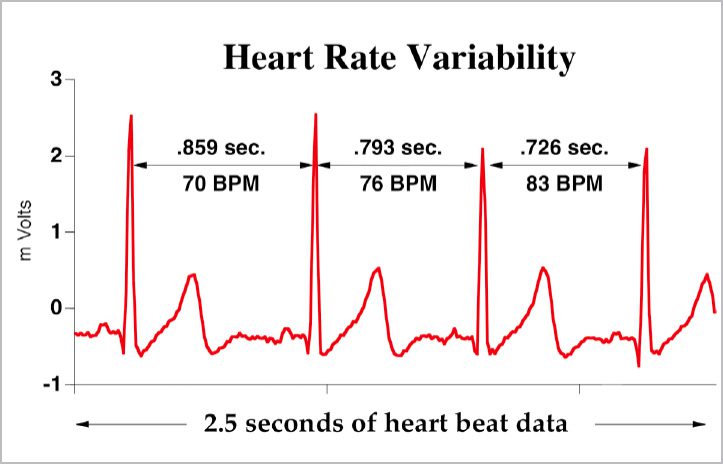Heart rate variability 101
A more accurate way to measure training stress on the body?

— By Michael Liberzon
Being a triathlete is hard — there are so many decisions to make and training aspects to optimize. One of the most difficult decisions is knowing when to hold back and when to go full gas. Getting that mix of hard, easy, and recovery days just right is the holy grail of endurance sport programming. There are many reasons why this is such a challenge. Most come down to individual variability in, among others:
- Physical resilience
- Psychological resilience
- Non-training stress (family, work, sleep, nutritional, etc.)
- Athletic experience
Until recently, most athletes and coaches have relied on a mix of best-practice rules and perception or self-reporting of fatigue. This works, provided the athlete is very self-aware and honest. Some monitored resting heart rate for more insight. Higher than baseline resting HR does correlate to fatigue, but the correlation is murky.
Enter HRV
Heart Rate Variability (HRV) testing is a tool that promises to take at least some guesswork out of the programming equation. So let’s talk about what it is and how to use it to make the most of your training / recovery cycle.
What is HRV?
Your heart rate is, of course, the number of cardiac contractions per minute. This number is an average. In truth the duration between heart beats is not always the same. Subtle variation – on the order of milliseconds – from one gap to the next.
The variability in the duration of these gaps is HRV. There is a strong correlation between this variability and the state of your autonomic nervous system (ANS). A low reading supports the dominance of the sympathetic – or ‘fight or flight’ – branch of your ANS, and is a state of high stress. Whereas a high HRV reading suggests the dominance of the parasymapathtic branch. This ‘rest and digest’ state is one of low stress.
So a very crude conclusion may go something like this:
When HRV is low, your body and mind are fatigued and a recovery workout or a rest day is ideal. When HRV is high, you are ready to work hard! There are important exceptions that are outside the scope of this primer but are absolutely worth understanding.
Here then are 7 steps to use HRV in your endurance sport practice.
- Select your tool. HRV measurement devices have come a very long way in the last 5 years. There are a number of solid options, including:
- Garmin 735xt & 935 Forerunner models have built-in HRV measurement functionality. Note that it’s mandatory to use HR chest straps with both units. The optical HR sensors are not accurate enough to measure HRV.
- Several smart phone apps that use the phone’s camera have been shown to be as accurate as HR chest straps. A couple that come highly recommended:
- HRV4Training
- Elite HRV
- Establish your baseline. This depends on the software / app you are using but is typically one or two weeks of consistent, daily measurements. It is best to establish this baseline when your training load is typical and you are fairly well-rested: the start of a base period training block, for example.
- Be consistent in your measurements
- Do your best to measure every day regardless of planned training load
- Always measure at the same time of day (ideally, immediately upon waking)
- Always measure with the same body position: laying, sitting, or standing
- Contextualize your measurements. Use your training diary / online program to record subjective factors like perceived fatigue, muscle soreness, sleep quality along with HRV. This will help put your HRV data in perspective.
- Embed some flexibility in your weekly plan. Have both hard and easy workout options for your training days. That way when HRV is low, you have an easy option. Conversely, when it’s high you’ll have something in the plan that’ll let you work hard.
- Don’t ignore prolonged low readings! Assuming your baseline was established correctly, a long period of low readings could be the harbinger of early stages of overtraining or illness.
- Take your grain of salt. Understand that HRV is just a tool in your training arsenal. It’s not meant to replace common sense and good judgement!
Train smart and have fun!

